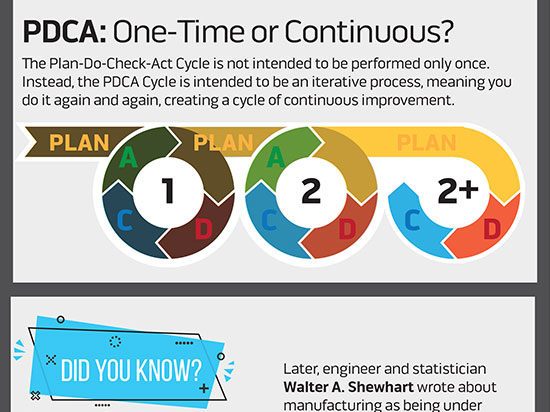
Not that long ago, we wrote a blog article about learning myths, and in that article, we promised we’d cycle back and write another on evidence-based training practices. This is the fulfillment of that earlier promise–an article on evidence-based training. (Note that in addition, you might want to check out this free, recorded webinar on evidence-based training and learning myths and this discussion about learning maximizers and learning myths with Dr. Will Thalheimer).
We’ll give you an introduction to evidence-based training in this article, explaining:
- What evidence-based training is
- Why we believe you should use evidence-based training methods
- What are some evidence-based training methods
- Where you can learn more about evidence-based training
Along the way, we’ll also link you to some other articles and interviews we’ve already done on evidence-based training practices, including interviews with some of the learning researchers out there.
We hope you’ll enjoy this and invite any questions.
- Learning Management Systems
- Online Workforce Training Courses
- Safety Management Software
- Mobile Training Apps
What Do We Mean When We Talk About Evidence-Based Training?
What do we mean when we talk about evidence-based training and/or evidence-based training practices in this article?
To paraphrase a bit of an article written by Mirjam Neelan and Paul Kirschner (good sources both), we’re talking about designing training with elements (1) that make training more effective and (2) that we know this “using evidence coming from scientific research.” (Please note that Neelan & Kirschner make a distinction between “evidence-based training” and evidence-informed training” that’s beyond the aims or scope of interest for this article but is still worth giving some thought to.)
So, when we talk about evidence-based training, we’re talking about things you can do during training, or things you can include in training, that will make the training more effective (meaning, increase comprehension, retention, later application on the job, and so on).
What We’re Not Talking About When We Talk About Evidence-Based Training (in this Article, at Least)
What we’re not talking about in this article is:
- Data from learner experiences gathered through something like SCORM or xAPI
- Training evaluation models, such as Kirkpatrick’s four-level model
That doesn’t mean it’s a bad idea to check learner data through something like xAPI. And it doesn’t mean you shouldn’t try to evaluate the effectiveness of your own training using something like Kirkpatrick’s or one of the other training evaluation models out there. It just means that’s not what we’re talking about here (and I don’t think that’s what folks in general are talking about when they talk about evidence-based training).
Stay tuned, though, because if you’re interested to learn more about training evaluation, we’ve got two interviews with Dr. Will Thalheimer discussing that issue that we’ll publish shortly.
What Are Some Evidence-Based Training Methods?
Here are just a few evidence-based training methods you can use in your training:
- Analyze your learners before training to determine things like level of prior knowledge, etc.
- Design training to match learners’ prior/existing knowledge
- Create learning objectives
- Reduce training content to the absolute minimum to teach learning objectives and cut out all additional materials
- Write and/or speak in a clear, concise manner avoiding big words, long sentences, and passive sentence structures
- Chunk your training into small, “bite-sized” pieces and sequence them in a logical format (especially for novices)
- Avoiding cognitive overload
- Tell stories
- Use visuals to illustrate your training point
- Provide demonstrations and then give workers opportunities to practice
- Provide helpful feedback based on that practice
- Awaken prior knowledge related to training topic
- Use metaphors, comparisons, similes, and analogies to known and/or familiar ideas, concepts, and objects
- Use examples and non-examples
- Have learners reflect on what they’re learning during and after training
- Have learners put what they’ve learned into their own words
- Give tests, even tests with no stakes or low stakes
- Use spaced learning/spaced practice
- Give training that includes opportunities for the learners to retrieve stored information from training
Here are a few additional articles/interviews from this blog that you will find helpful on this topic:
- Evidence-Based Training & Learning Myths (discussion with Dr. Will Thalheimer)
- Is eLearning as Effective as Classroom Training? (discussion with Dr. Will Thalheimer)
- Spaced Practice (discussion with Dr. Will Thalheimer)
- Deep Learning, Deliberate Practice & Desirable Difficulties (discussion with Patti Shank)
- Desirable Difficulties
- Deliberate Practice
Why Should You Care About Evidence-Based Training Methods?
I’m betting that because you are reading this article you do care and don’t need reasons. But, just in case, consider these.
We all want to do our jobs well, right? Maybe for intrinsic reasons or maybe for reasons related to job security and future promotions. But creating better training using evidence-based practices should make you better at your job.
Plus, because training is your job (or part of your job), it’s your responsibility to use the most effective methods possible. You owe it to the learners first of all, so you’re not wasting their time and effort. And you owe it to whomever is footing the bill for the training creation, too.
Plus, it’s cool to do a job and do it well. That seems like reason enough.
Where Can You Learn More About Evidence-Based Training Methods?
Want to learn even more? Here are some great resources for you.
- Dr. Ruth Colvin-Clark, Evidence-Based Training Methods (start here, perhaps, for key distinction between training delivery methods and instructional methods)
- Julie Dirksen, Design for How People Learn (but if you can read only one book, I’d suggest this great, great one)
- Anders Erickson’s Peak: Secrets from the New Science of Expertise
- Dr. Will Thalheimer
- Dr. Patti Shank (check out all three books–one on writing, one on practice & feedback, and one on managing memory, and keep your eye out for a new/fourth book that “well-placed sources” just mentioned to me)
- Mirjam Neelan, Evidence-Informed Learning Design and 12 Building Blocks for Effective Learning Design
- Elizabeth and Robert Bjork and the Bjork Learning and Forgetting Lab
- Clark Quinn, Millennials, Goldfish & Other Training Misconceptions
- Plenty more, including some great ones I’m no doubt forgetting (apologies!)
Let us know some of your own favorite evidence-based training methods and sources of evidence-based training in the comments below.
And because this involves issues of science, evidence, testing (and re-testing), why not download a free PDCA Cycle infographic?

FREE PDCA Cycle Infographic
Download this free infographic of the Plan-Do-Check-Act (PDCA) cycle commonly used for quality control, project planning, and continuous improvement.